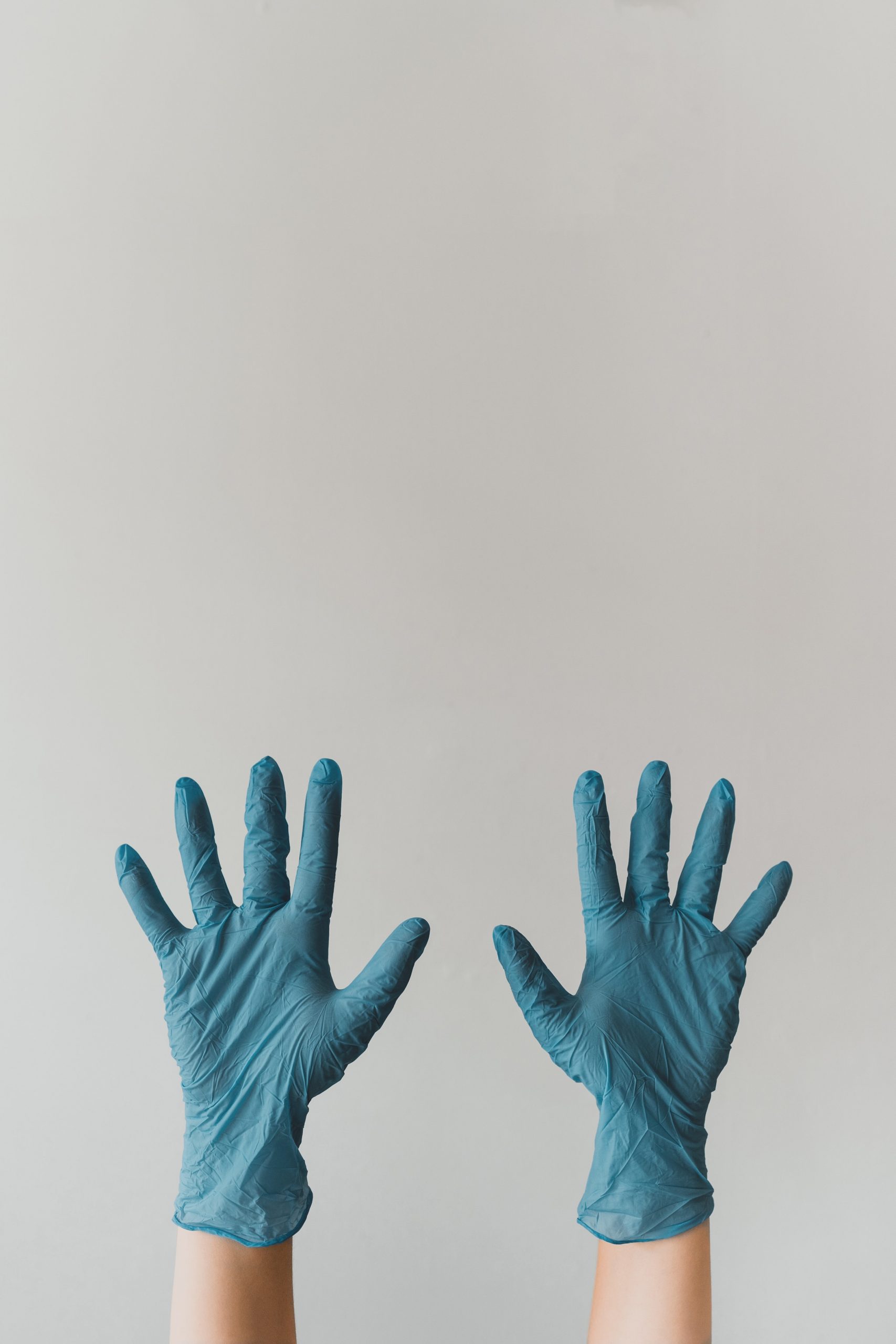


General Classroom Safety
-
Establish a “safety-first” culture: make safety rules part of classroom routines, not one-off reminders.
-
Practice a “materials distribution and collection system” so that supplies aren’t left unattended or misused.
-
Always keep walkways clear — backpacks and chairs tucked in, supplies off the floor.
-
Assign cleanup roles (sink monitor, brush washer, table wiper) to create responsibility and reduce chaos.
-
Post visual reminders (safety posters, tool-use diagrams) at workstations.
Material-Specific Safety
Cutting Tools
-
Teach proper cutting direction (cut away from the body, keep hands behind the blade).
-
Provide cutting mats or cardboard bases to protect tables and prevent slips.
-
Never allow students to walk with open scissors or sharp tools.
Adhesives
-
Use white glue or glue sticks; avoid rubber cement and solvent-based glues.
-
Hot glue guns (if used) should be low-temperature and only under direct supervision.
Paints, Dyes, & Inks
-
Store paints in clearly labeled, sealed containers.
-
Avoid powdered pigments — always use premixed or liquid forms.
-
Provide brush washing stations and never allow students to drink from water cups.
Printmaking
-
Use water-based inks instead of oil-based.
-
Ensure brayers, plates, and presses are handled carefully to prevent pinching or rolling injuries.
Sculpture Materials
-
For wire: use soft, plastic-coated wire for younger grades; pliers and cutters are teacher-use tools.
-
For cardboard: pre-cut difficult shapes for younger children.
Textiles & Fibers
-
Provide blunt needles for sewing projects.
-
Teach students to store needles in pin cushions or containers (never loose on tables).
Digital/Tech Tools
-
Monitor safe use of projectors, hot lamps, or light boxes.
-
Ensure cords are taped down to avoid tripping.
Personal Safety
-
Wear eye protection if cutting, hammering, or working with clay/glaze dust.
-
Use non-latex gloves when working with materials that can stain or irritate skin.
-
Encourage students to keep food and drinks out of the art room.
-
Keep personal belongings (jackets, phones, snacks) in a designated area, away from materials.
Environmental & Chemical Safety
-
Avoid using materials containing lead, chromium, formaldehyde, or turpentine in schools.
-
Store all chemicals (including strong cleaners) in a locked cabinet.
-
Label every container with contents and hazard information.
-
Dispose of paint water in sinks only after solids are filtered out (to prevent clogging).
Allergies & Inclusivity
-
Provide fragrance-free environments: no scented markers, clays, or soaps.
-
Offer adaptive tools for students with fine-motor challenges (scissor grips, larger brushes).
-
Create “safe zones” where students with sensory sensitivities can take a break.
-
For food-based art (e.g., pasta, flour, egg tempera), always confirm allergy safety first.
Emergency Preparedness
-
Place a fire extinguisher and eye-wash station in or near the art room.
-
Have a spill kit for paint, ink, or clay slip accidents.
-
Teach students what to do if a spill occurs on skin or in eyes.
-
Practice an art-room evacuation drill (safe cleanup, tool down, line up).
Digital & Media Safety
-
If photographing student work: follow school and parental consent policies.
-
Do not allow students to post images of themselves or peers online without permission.
-
Protect student privacy in online platforms used for portfolios or exhibitions.
Teacher Candidate Professional Practice
-
Always preview and test every lesson and material before introducing it.
-
Prepare a risk assessment: what could go wrong, and how will you prevent it?
-
Keep a log of accidents/incidents — reflect on what changes could be made next time.
-
Model calm, responsible behavior: students follow what they see more than what they hear.
Expanded Quick-Check for Teacher Candidates
Are materials safe, labeled, and age-appropriate?
Have I demonstrated tool/material use safely?
Do I have a clear cleanup plan with student jobs?
Are first aid and emergency contacts accessible?
Have I considered allergies, inclusivity, and diverse needs?
Do I know how to dispose of materials safely?
The 2019 Saskatchewan Visual Arts Curriculum Guidelines state:
Safety is an essential consideration in all learning environments.
To create a safe environment for learning requires that teachers be informed, aware and proactive and that students listen, think and respond appropriately.
Safe practices are the joint responsibility of teachers and students.
Safety refers to more than protecting students’ physical safety (e.g., injury prevention procedures). Safety also includes students’ personal and emotional safety and sense of belonging which can be supported by ensuring that learning takes place in an inclusive environment free from subtle or overt stereotypes (e.g., racial, gender and sexual diversity, socio-economic or social status), exclusion, bullying or use of inappropriate language and behaviours.
The teacher’s responsibility is to provide instruction and supervision within a safe environment (e.g., floor free of debris, the climate of respect for self and others) and to ensure the students are aware of safe practices such as the importance of appropriate clothing and equipment, inclusion of all students in the work, adjusting tasks for students who may require adaptations, and ensuring proper techniques in each art form (e.g., warm-up and body alignment in dance, proper breathing while singing or playing, caution with visual art tools and chemicals). The students’ responsibility is to act appropriately based on the information and guidance provided by the teacher and/or resources.
Kwan, Texley and Summers (2004) suggest that teachers, as professionals, consider the four Ps of safety: prepare, plan, prevent and protect. The following points are adapted from those guidelines and provide a starting point for thinking about safety in the classroom:
Prepare
- Keep up to date with personal safety knowledge and certifications.
- Be aware of national, provincial, school division and school-level safety policies and guidelines.
- Design a safety agreement with students.
Plan
- Develop learning plans that promote effective and safe learning for all students.
- Choose activities that are suited to the abilities, maturity and behaviour of all students.
- Create safety agreements and checklists for in-class activities and field studies.
Prevent
- Assess and mitigate hazards (e.g., ensure dance and theatrical stage props and equipment are not defective).
- Review procedures for accident prevention with students (e.g., transporting students to off-site locations, ensuring vocal health when playing instruments or singing).
- Teach and review safety procedures with students (e.g., how to move to avoid muscle strains or fabrics becoming entangled, proper posture when playing, storing or transporting musical instruments).
- Do not use defective or unsafe equipment or procedures.
- Do not allow students to eat or drink in areas used for learning activities (e.g., the procedure for staying hydrated but avoiding liquid spills on the floor).
Protect
- Ensure students have sufficient protective devices where applicable (e.g., masks or protective eyewear as needed when using visual art tools, creating dance props or stage backdrops).
- Demonstrate and instruct students on the proper use of safety equipment and protective gear.
- Model safe practices by insisting that all students, teachers and visitors (e.g., guest artists) follow school division safety guidelines.
Safety in the classroom includes the storage, use and disposal of chemicals (e.g., visual art materials such as paint, ceramic glazes, photography, lithography, sculpture or materials used in the construction of drama/theatre or dance staging). The Workplace Hazardous Materials Information System (WHMIS) regulations (WHMIS 1998 and WHMIS 2015) under the Hazardous Products Act and the Hazardous Product Regulations govern storage and handling practices of chemicals in schools. All school divisions must comply with the provisions of these regulations.
Chemicals should be stored in a safe location according to a chemical class, not just alphabetically. Appropriate cautionary labels must be placed on all chemical containers and all school division employees using hazardous substances should have access to appropriate Materials Safety Data Sheets (WHMIS 1998) or Safety Data Sheets (WHMIS 2015). Under provincial WHMIS regulations, all employees involved in handling hazardous substances must receive training by their employer. Teachers who have not been informed about or trained in this program should contact their director of education. Further information related to WHMIS is available from Health Canada and the Saskatchewan Ministry of Labour Relations and Workplace Safety.
